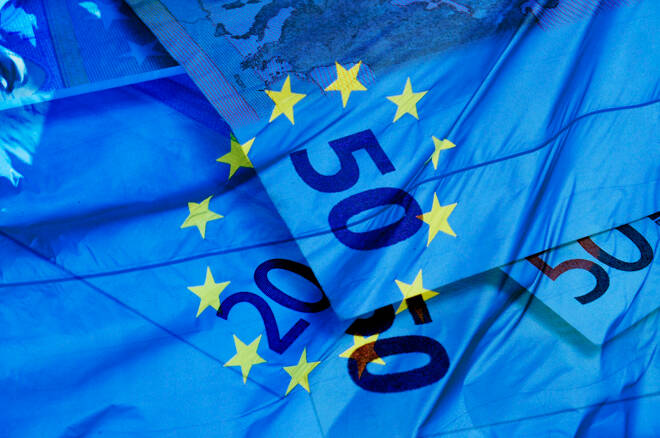Advertisement
Advertisement
Eurozone Industrial Production Figures Peg Back the EUR
By:
Economic data from the Eurozone failed to support the EUR ahead of inflation figures from the U.S later today...
It was another relatively busy Eurozone economic calendar. Industrial production figures for the Eurozone and finalized inflation figures for France and Germany were in focus this morning.
German Inflation
In the month of April, consumer price increased by x%, following a 0.7% rise in March. This was in line with prelim figures.
At the turn of the quarter, the annual rate of inflation picked up from 1.7% to 2.0% according to finalized figures. This was in line with prelim figures.
According to Destatis,
- Compared with a year earlier, energy prices jumped by 7.9%, following a 4.8% rise in March 2021.
- Food prices increased by 1.9%.
- Prices for mobile phones slid by 8.3%, however.
- Excluding energy product prices, the rate of inflation would have been 1.4% in April.
- Prices for services were up 1.6% in April 2021 compared with the same month in 2020. Net rents exclusive of heating expenses rose by 1.3%.
French Inflation
In the month of April, consumer prices increased by 0.1%, which was down from a prelim 0.2%. Consumer prices had risen by 0.6% in the month of March.
According to Insee.Fr,
- Prices for manufactured goods fell by 0.1% after a 1.6% increase in March.
- Energy prices fell by 0.4% after a 2.2% jump in March.
- While tobacco prices were stable, food prices increased by 0.6% in the month.
- Prices for services grew by 0.1%.
- The annual rate of inflation ticked up from 1.1% to 1.2% in April.
- Energy prices jumped by 8.8% after being up by 4.7% in March, with prices for services up 1.2%.
- Prices for manufactured goods held steady, while food prices fell by 0.3%.
Eurozone Industrial Production
In March, industrial production rose by 0.1%, month-on-month, following a 1.2% decline from April. Economists had forecast a 0.7% increase.
When compared with March 2020, industrial production was up by 10.9%, falling short of a forecasted 11.6 increase. In February, production had fallen by 1.8% year-on-year.
According to Eurostat,
- Compared with Feb-2021, production of non-durable consumer goods rose by 1.9%, and energy by 1.2%.
- The production of intermediate goods rose by 0.6%, while the production of capital goods fell by 1.0%.
- For durable consumer goods, production fell by 1.2% in the month.
- When compared with Mar-2020, production of durable consumer goods jumped by 34.4%.
- There were also marked increases in the production of capital goods (+16.1%) and intermediate goods (+13.3%).
- Energy production rose by 3.3%, while the production of non-durable goods increased by just 0.7%.
- By member state, industrial production in Italy rose by 37.7%, year-on-year, to lead the way.
Market Impact
Ahead of the numbers the EUR had risen to a pre-stat and current day high $1.21511 before falling to a pre-stat and current day low $1.21155.
In response to the finalized inflation figures, the EUR rose to a post-stat high $1.21439 before falling back to a post inflation data low $1.21262.
The industrial production figures failed to provide support, with the EUR falling from $1.21351 to a post-stat low $1.21297.
At the time of writing, the EUR was down by 0.15% to $1.21301.
Next Up
April inflation figures from the U.S…
About the Author
Bob Masonauthor
With over 28 years of experience in the financial industry, Bob has worked with various global rating agencies and multinational banks. Currently he is covering currencies, commodities, alternative asset classes and global equities, focusing mostly on European and Asian markets.
Advertisement
